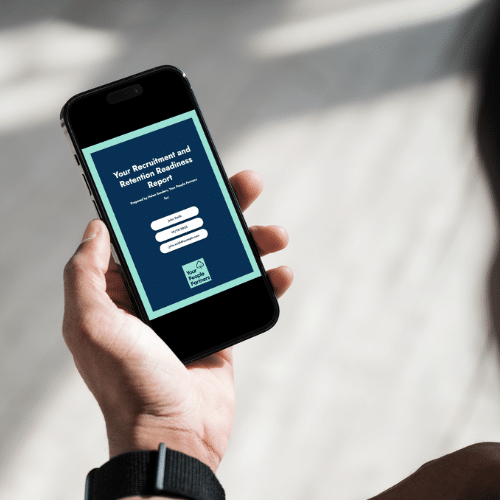The growth of a small business often comes with the need to expand your workforce. Hiring your first employee can be a daunting task, especially if you’re not familiar with the recruitment process. However, it’s an essential step that can significantly contribute to the success of your business. This article will guide you through the necessary steps and considerations when hiring your first employee.
Understanding Your Needs
Before you start the recruitment process for your small business, it’s crucial to understand what you need from your first employee.
What role will they play in your company?
What skills should they possess?
How much are you willing … and able … to pay them?
These are some of the questions that you need to answer before starting the recruitment process.
Firstly, define the job role clearly. It should include specific tasks that the employee will be responsible for and skills required for those tasks. This will help potential candidates understand whether they’re suitable for the job or not.
One easy way to do this is to consider:
What does success look like once this person has been in my team for six months?
And then consider:
What does success look like at one year?
Next, decide on a competitive salary range based on industry standards and what you can afford as a small business owner. Remember, offering a fair compensation package is key to attracting quality candidates. Partner salary with flexible benefits from companies like Juno or Heka, and you can better compete with other companies.
Lastly, consider whether you want a full-time or part-time employee. This decision depends on how much work needs to be done and how much time you can commit to managing this new hire. Your budget may also dictate whether you can afford a part-time or full-time person.
The Recruitment Process
Once you’ve defined what kind of employee you’re looking for, it’s time to start recruiting. The recruitment process involves advertising the job vacancy, screening applications, conducting interviews, assessing whether they can do the job and finally selecting the most suitable candidate.
Start by advertising your job vacancy on various platforms such as online job boards, social media platforms like LinkedIn or even local newspapers. The latter may sound like a rather old-school approach. However, for some local companies, advertising in local newspapers, supermarkets and libraries can work every well. This will depend on the type of role and where your ideal candidate hangs out.
Make sure that your job advertisement is clear and concise while highlighting all necessary details about the role and its requirements. Don’t ever advertise a job without a salary range and info on benefits too.
After receiving applications, ask them for a cover letter at that point. Don’t ask for a cover letter in the advert as you’ll very likely get a generic one. This is because job sites don’t allow candidates to upload more than one CV and more than one cover letter. So once you have applications piling up in your inbox, email them all back and remind them of the job advert, add your website URL and ask them to share more about why your role could be the best move for them at this time.
Screen them based on their cover letter. Why?
If you’ve followed what we call the double-opt-in recruitment process, they are engaged and interested. If someone is not even happy to write a short cover letter via email to ensure they rise to the top of your applications, then they are unlikely to be your ideal candidate at this time.
This will help you shortlist potential candidates for the interview stage.
Ideally, you need to have a multi-pronged approach with multiple interviews, but not too many.
- Phone interview
- Face to face or video interview
- Team lunch or coffee
Phone Interviews
Send them your Calendly or diary link so they can choose a time to chat with you.
Do not call them off the cuff as it’s unlikely they’ll be at their optimal for an interview. They may be in the supermarket, making the kids lunch, or about to jump in the shower (yes, people do answer the phone when in the bathroom…)
Let them know that of 160 applications, they’re only one of 8 that you’ve selected (or whatever is your truth!)
This call is all about them. You should be speaking only 30% of the time. Let them know you’re more interested in what makes them tick, as opposed to ‘why they want this job?’.
Take a little time to share the process and timeline.
Face to face interview or video interview
In between the phone interview and this interview, consider sending a short assessment across. If we don’t assess skills as part of the hiring process, we risk only hiring those who are good at interviewing. However, having interviewed thousands of people since I started in recruitment back in 1997, I know that those who interview the best, are not always the best for my team or yours. They just have confidence in interviews, yet that doesn’t always translate into being a great fit for our company or the job we need them to do.
Assessing their skills in between interviews allows you to open the interview with questions and a debrief on their process and outcome. It also lends itself to a more structured interview which is essential to giving you confidence in hiring.
If you choose to, you could ask them to create a presentation and deliver that instead of an assessment. Only do this if the role calls for this type of skill set.
During interviews, ask questions that will help you understand the candidate’s skills, experience, and work ethic. It’s also important to assess whether they would add to your company culture.
Team lunch / coffee
Why have a team lunch or coffee after your interviews? In a small business, there is nowhere to hide if this person doesn’t add to your team and its culture. More interviews only serve to have more formality and do not help you or your team appreciate the culture of the person.
A lunch or coffee, either in person or done via Google Meet / Zoom, helps everyone to be ‘normal’ and less in interview mode. Give your team a few pointers of the type of questions or icebreakers they can rely on in these meetings.
Legal Considerations
When hiring your first employee, there are several legal considerations that you need to keep in mind. These include employment contracts, tax obligations, and employee rights.
An employment contract is a legal agreement between you and your employee outlining the terms of their employment. It should include details such as job description, salary, when and how salary is paid, line manager, location of the job, working hours, leave allowances including sick leave, holiday allowance, maternity/paternity leave info and compassionate leave, and termination conditions.
As an employer, you’re also responsible for withholding taxes from your employee’s salary and paying them to the government via HMRC (in the UK). Make sure to familiarise yourself with these tax obligations to avoid any legal issues in the future. If this new hire is your first employee, and you don’t pay yourself via payroll already, then you or your accountant need to register with HMRC as an employer before the first month’s payroll is processed and paid.
Lastly, be aware of employee rights such as minimum wage requirements, overtime pay rules, and anti-discrimination laws. Violating these rights can lead to serious legal consequences for your business.
Onboarding Your First Employee
After successfully recruiting your first employee, it’s time to onboard them into your business. Onboarding involves introducing them to their role and responsibilities, company policies and culture.
Start by providing a comprehensive orientation that covers all aspects of their job role. This includes training them on how to perform their tasks effectively and safely.
Next, introduce them to your company policies, such as work hours, leave policies, and code of conduct, among others. This will help set clear expectations right from the start.
Part of your onboarding is setting expectations on what success looks and feels like for you and for your new hire. Schedule monthly check-ins where you and they can discuss how things are going, progress made, and any specific challenges.
Finally, make an effort to integrate them into your company culture. This could involve introducing them to other team members or even organizing team-building activities. Yes, small businesses can have team-building activities. If you’re remote-first, then an online icebreaker lunch every month is a great option. No business talk allowed. Just use an icebreaker to get to know each other well, and the company buys lunch!
Conclusion
Hiring your first employee is a significant milestone in the growth of any small business. While it can be a challenging process filled with uncertainties and legalities; understanding what you need from an employee; following a thorough recruitment process; being aware of legal considerations; and effectively onboarding your new hire can make the process smoother and more successful. Remember, this first hire will set the tone for future recruitment, so take your time and choose wisely.
We’d be delighted to guide you in hiring your first employee. You can join our free workshops or our learning campus for a low-cost, hands-on training program with a specialist mentor, Helen Sanders. She’s the founder of Your People Partners and the UK’s leading advocate for small business recruitment.









